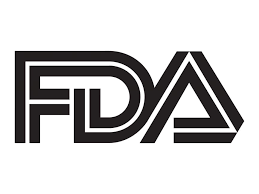Article
FDA Approves Port Delivery System with Ranibizumab for Wet AMD
Author(s):
The novel PDS implant will allow patients with retina disease to receive continuous anti-VEGF formulation for up to 6 months between refills.

The US Food and Drug Administration (FDA) has approved the Port Delivery System with ranibizumab (PDS) for the treatment of neovascular age-related macular degeneration (nAMD) in adults.
The approval, granted to Roche, is the first awarded to a drug delivered via PDS, a novel permanent eye implant that provides a continuous administration of ranbizumab formulation through a vitreous cavity. Ophthalmologists have long stressed to HCPLive® the burden of anti-VEGF intravitreal injection therapy—a staple of AMD treatment—on patient wellbeing, their adherence to care, and as such, their capability to manage a chronic blinding disease.
Anti-VEGF formula delivered PDS has been a promising prospect to help mitigate each of those issues for nearly 2 decades; the data supporting Roche’s FDA application evidences such benefits.
“Most patients have to come into our clinic every month or every other month to receive treatment, and the real-world data shows that the number of injections is much less than in clinical trials,” Arshad M. Khanani, MD, MA, managing partner of Sierra Eye Associates, told HCPLive. “What ends up happening is patients don’t maintain visual acuity gains that we see initially. The hope is the port delivery system significantly reduces the treatment burden in patients with nAMD.”
Ranibizumab PDS Data in the Archway Trial
The randomized, multicenter, open-label phase 3 Archway study was designed to assess the efficacy and safety of PDS with ranibizumab versus intravitreal ranibizumab injection in patients with nAMD.
Patients (n = 418) were randomized to either PDS implantation with 6-month ranibizumab refills, or monthly intravitreal 0.5 mg ranibizumab. Investigators sought a primary endpoint of change in best corrected visual acuity (BCVA) score from baseline to weeks 36 and 40. They additionally observed safety endpoints, as well as overall change in BCVA and center retina thickness.
Archway-eligible patients previously had response to anti-VEGF therapy, and had received ≥3 anti-VEGF injections within the 6 months prior to the trial screening. Patients had received approximately 5 mean injections prior to their first trial visit.
Investigators observed non-inferior benefit of ranibizumab PDS to monthly ranibizumab injections. Patients administered care via port delivery improved BCVA by a mean 0.2 letters from baseline, versus 0.5 letters among patients given injections. Central retina thickness was maintained consistently across both PDS and injection patients: the treatment arms each reported a 10 mcm change from baseline to week 36.
Just 1.6% of patients with a PDS implant received supplemental treatment for their nAMD at their first treatment interval. Investigators observed good tolerance with PDS ranibizumab, resulting in a clinically favorable benefit-risk profile.
Additionally, new Archway data presented by Khanani at the American Society for Retina Specialists (ASRS) 2021 Scientific Meeting this month showed patient retinal fluid rates—a key component in treating neovascular, or “wet,” AMD—did not influence the clinical benefits of PDS ranibizumab.
Experts Discuss PDS Ranibizumab
As recently as at ASRS 2021, a key topic of research and deliberation in retina care is in improving patient wellbeing during anti-VEGF treatment. In fact, new data presented at the meeting showed consistent intravitreal injections were associated with frequent adverse events, restriction on daily activities, and worsened metrics in quality of life.
Josh Mali, MD, of The Eye Associates, explained to HCPLive on a recent podcast that the key issue in refining anti-VEGF care is the matter of treatment durability.
“We have great anti-VEGF medications…the question is, are we able to sustain them from a durability standpoint and a drug delivery standpoint?” Mali said. “I think port delivery system answers that question. I think this will be a great addition to our practice.”
That said, the approval of PDS presents a novel invasive procedure for ophthalmologists to learn and adopt into their practices. Veeral S. Sheth, MD, MBA, Director of Clinical Research at University Retina and Macular Associates, told HCPLive at ASRS 2021 that some particularities of PDS implantation are familiar to his colleagues from their days in residency—but more components of the procedure are not.
“I think it’s really re-introducing some of these concepts and talking about practices and pearls that have been picked up along the way in clinical trials,” Sheth said.
That said, Khanani—who is closely familiar with the progression of the Archway trial—said he believes physicians in the clinical assessments of PDS have become very comfortable with the new procedure as well as the twice-annual refill exchange in their clinics.
To an extent, the FDA approval of PDS ranibizumab is a trade-off: ophthalmologists will take time to become comfortable with the new procedure, for the sake of making their patients more comfortable with their care.
“Every day, we encounter patients who are tired of their injections,” Sheth said. “They’ll say, ‘When will this be over?’ or ‘How long do I have to do this for?’ For years, we really couldn’t give them a good answer, but now with this on the horizon, it’s giving patients hope that they can ease that burden.”




